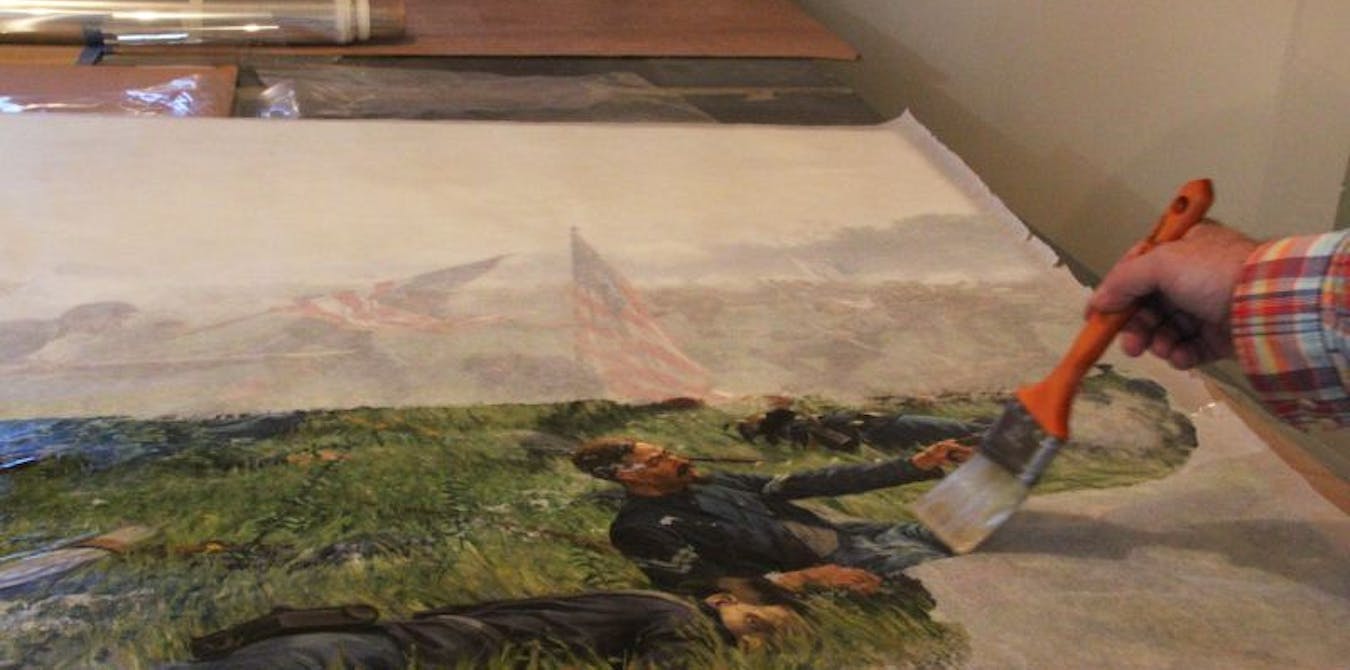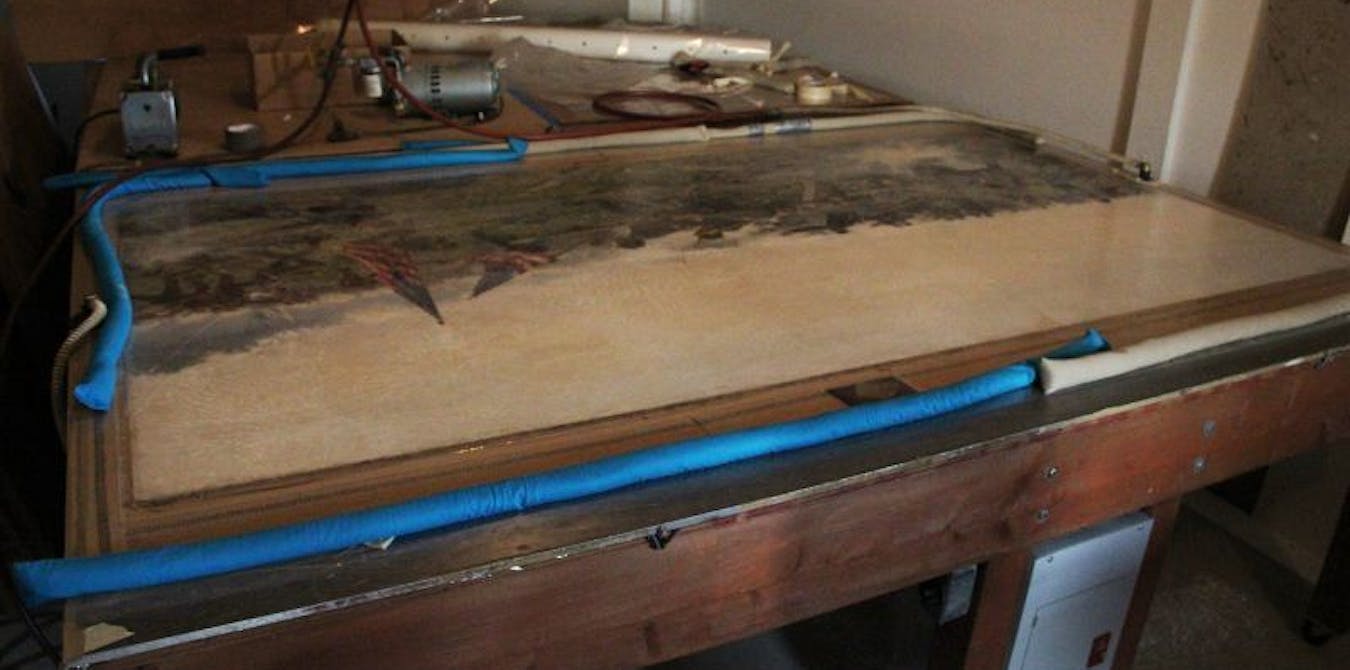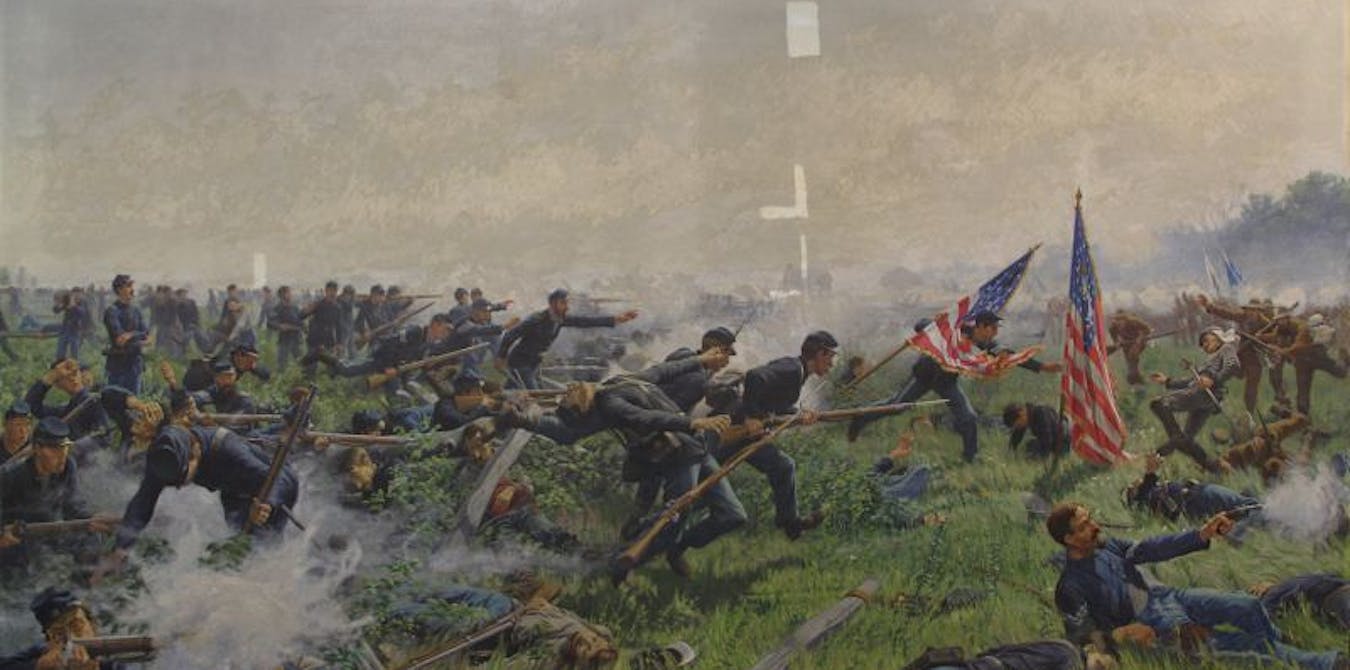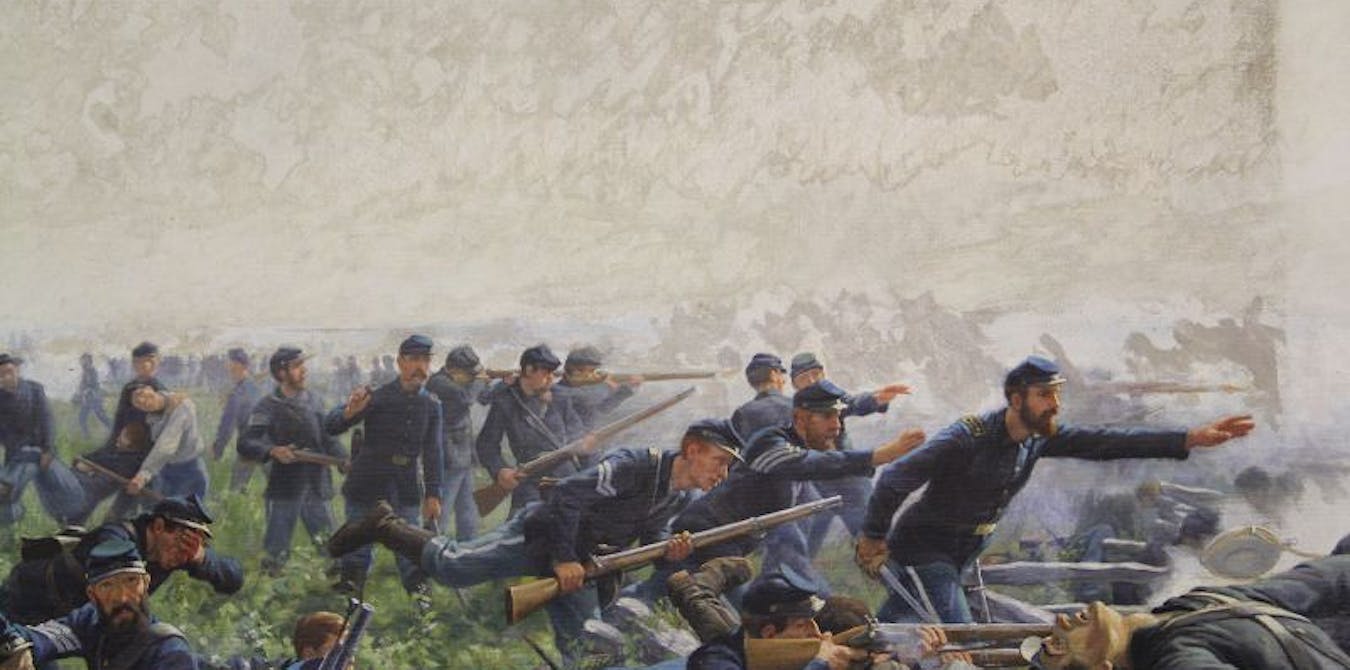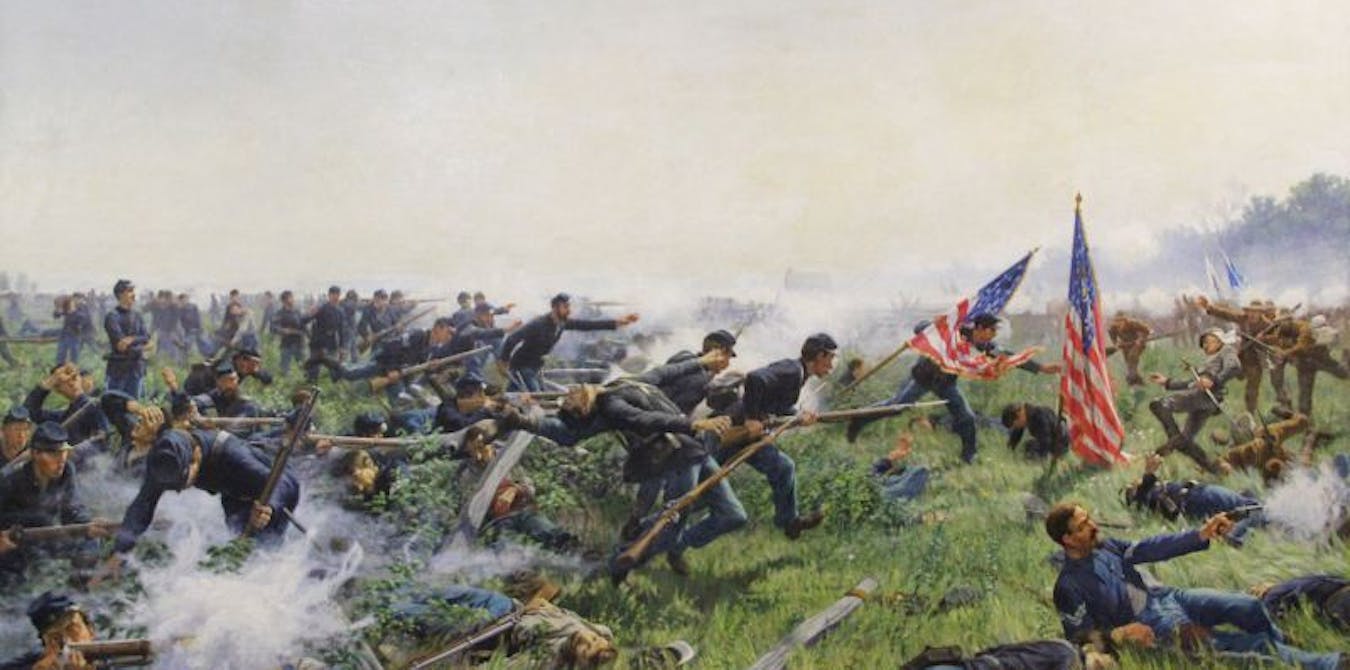Erasing Years of Soot and Grime
The art: The Rescue of the Colors (Battle of Fair Oaks, Virginia), by William Trego (1858-1909)
The restoration: Trego's painting was housed in a museum with a coal-burning furnace. Over the years, it absorbed the coal dust and soot, which stubbornly clung to the surface even after the initial phase of the cleaning. We started by facing the surface of the painting with a layer of Japanese tissue paper. From there, we saturated the painting with a thin layer of liquid BEVA 371 Solution. The facing is done to protect the paint during the relining procedure that comes next. The canvas is removed from the stretcher and placed on a custom vacuum-pressure hot table, which evenly heats the canvas. We placed a Mylar interleaf on the back of the canvas to keep the handwritten title and location of the battle from being obscured by the new lining. And then we lined the canvas with an acrylic fabric that had no weave imperfections and cut out a window for the handwritten notations.
The relining complete, we reattached the canvas to the original stretcher and removed the Japanese tissue paper. The testing began then for the cleaning. Every pigment responds a little differently to solvents and cleaning agents, so we gently rubbed a small area at a time with a cotton swab, incrementally increasing the intensity of the cleaner.
With so much of the coal dust and soot remaining, we moved on to a light abrasive powder with the surfactant. After every step of the cleaning, the process is neutralized with mineral spirits, which keeps the surfactant and cleaning agents from continuing to interact with the paint. And once the cleaning is done, we apply a varnish that acts as a separation coat, providing a barrier between the original painting and any subsequent filling and in-painting, which is done with special non-darkening restoration colors. When that's finished, a final coat of varnish is sprayed on.
The frame needed repairing, too. It's an eight-inch-wide, ornate, high-relief, leaf-and-berry design. It was gilded in gold leaf, but it had lost much of its luster. We set about cleaning every crevice and crease with a cotton swab, a time- and labor-intensive process, but it's effective. Once the brilliance of the gold leaf was restored, we addressed the frame's many broken and missing segments, sculpting new ones with an epoxy putty, then gilding them and faux-aging them so that they matched the original.
A detailed pediment also needed to be restored and reattached to the frame. Again, we cleaned it with cotton swabs. Portions of the lettering were then given a fresh coat of restoration paint. And, like the frame, a number of replacement segments were sculpted, gilded, and faux-aged.
The frame was restored, the painting was inserted and a protective archival backing was installed.


